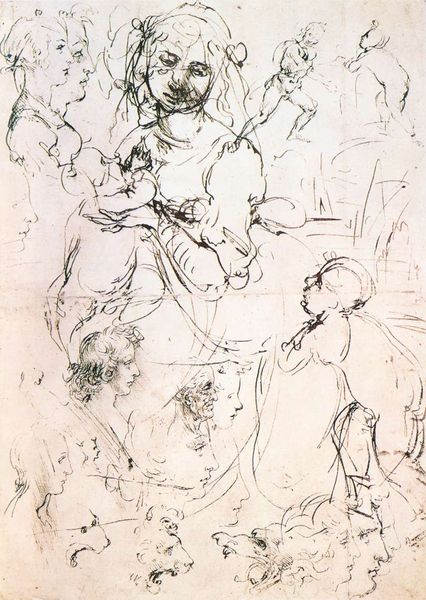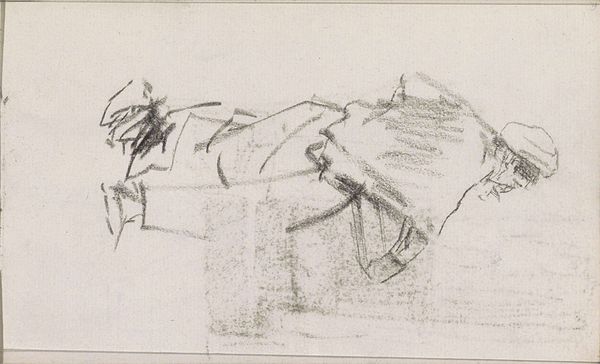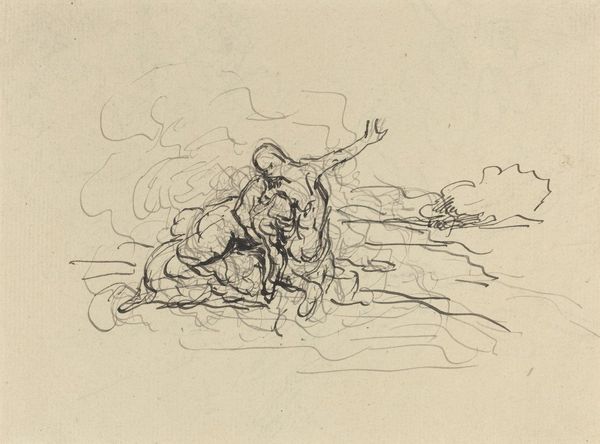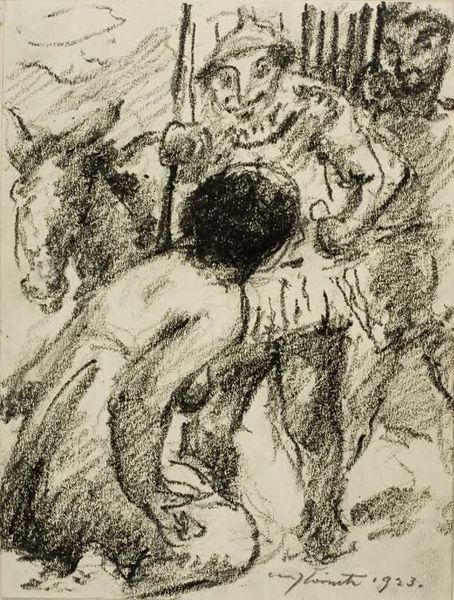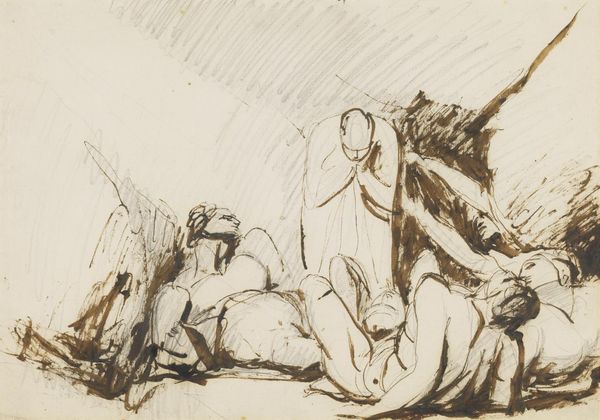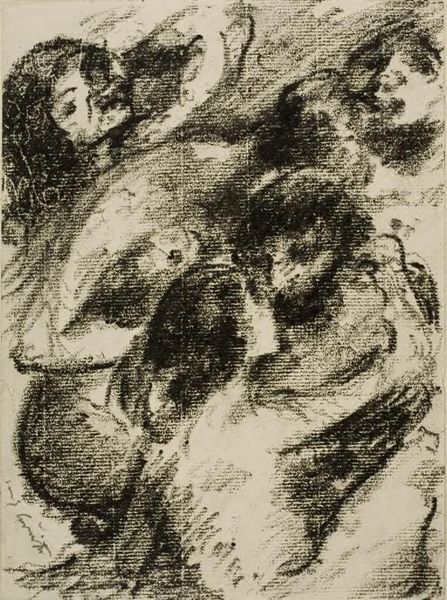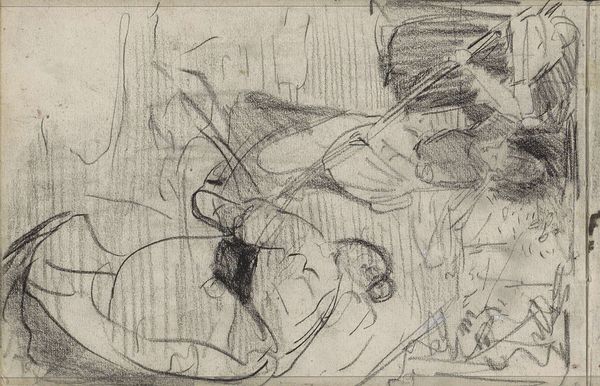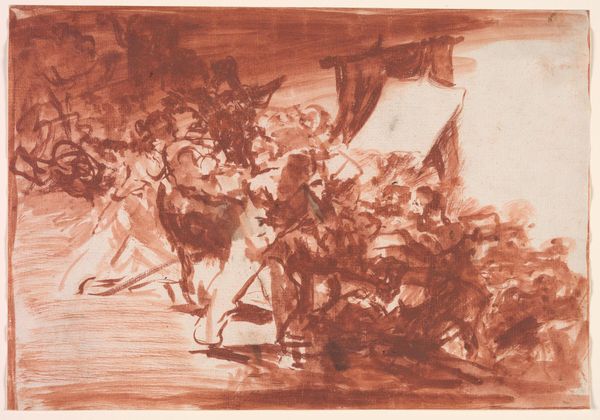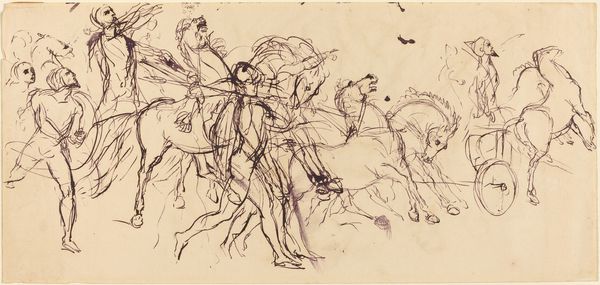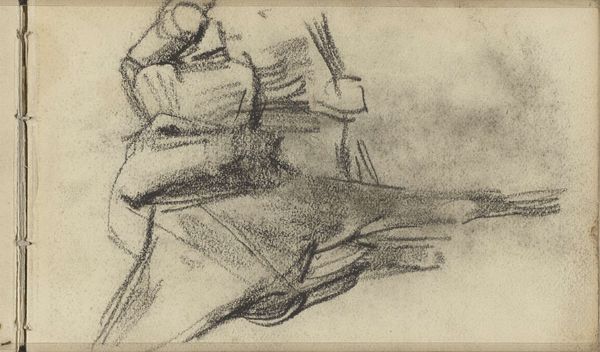
drawing, ink
#
portrait
#
drawing
#
charcoal drawing
#
ink
#
portrait drawing
#
rococo
Copyright: Public domain
Curator: Immediately, there's a dreamlike quality that strikes me about this sketch, almost a fleeting vision rendered in dark strokes. What's your initial reaction? Editor: This drawing, titled "Pasha," comes from the hand of Jean-Honoré Fragonard. Though undated, it reveals a world filtered through the lens of Rococo sensibilities. It's rendered with ink and charcoal, those dark strokes creating a sense of drama. How do you understand that drama in context? Curator: It speaks to me of power, or rather, the performance of power. Look at the way he's reclining; there's an implied hierarchy. How would a contemporary viewer interpret that representation, given its exoticism? The turban, the implied opulence... Editor: Absolutely. The turban itself is a potent symbol. Throughout history, head coverings have denoted status, religious affiliation, even rebellion. Here, it’s clearly a marker of otherness, isn’t it? A signal of the “oriental” in the European imagination, constructed through symbols we continue to grapple with. It raises questions about authenticity versus perceived identity. Curator: The loose application also suggests an immediacy. Was this sketched from life, or drawn later, filtered through imagination? Did Fragonard see his subject as a complex human, or simply as the exoticized 'Pasha' archetype? These are vital questions in considering cultural representation, and the power dynamics implicit in artistic vision. Editor: Yes, and there is that contrast, isn’t it? Fragonard, steeped in Rococo, turning to imagery brimming with visual and historic significance. "Pasha" uses these loaded signs to depict a world of both fantasy and perhaps unintended commentary. Curator: It's precisely in that intersection, the beauty alongside the loaded symbolism, that Fragonard forces us to confront the complex narratives interwoven in artistic creation and reception. Editor: This glimpse into a historical portrayal opens doors to understanding how imagery informs our own present, how the 'Pasha,' continues to echo, transformed but present, in our cultural landscape.
Comments
No comments
Be the first to comment and join the conversation on the ultimate creative platform.
